Breaking News
Russian Army to finally receive more T-90M Proryv-3 tanks with long-awaited Arena-M APS.
As reported by TASS on August 13, 2024, the Russian Armed Forces are set to enhance their armored capabilities with the delivery of modernized T-90M Proryv-3 tanks equipped with the hard-kill Arena-M active protection system (APS). This development was formalized during the Army-2024 forum, held at Patriot Park in the Moscow region. During the event, Colonel General Anatoly Gulyayev, Chief of the Main Directorate of Armaments of the Russian Armed Forces, presented state contracts to Dmitry Semizorov, Deputy General Director of Uralvagonzavod, the company responsible for producing these upgraded tanks.
Follow Army Recognition on Google News at this link
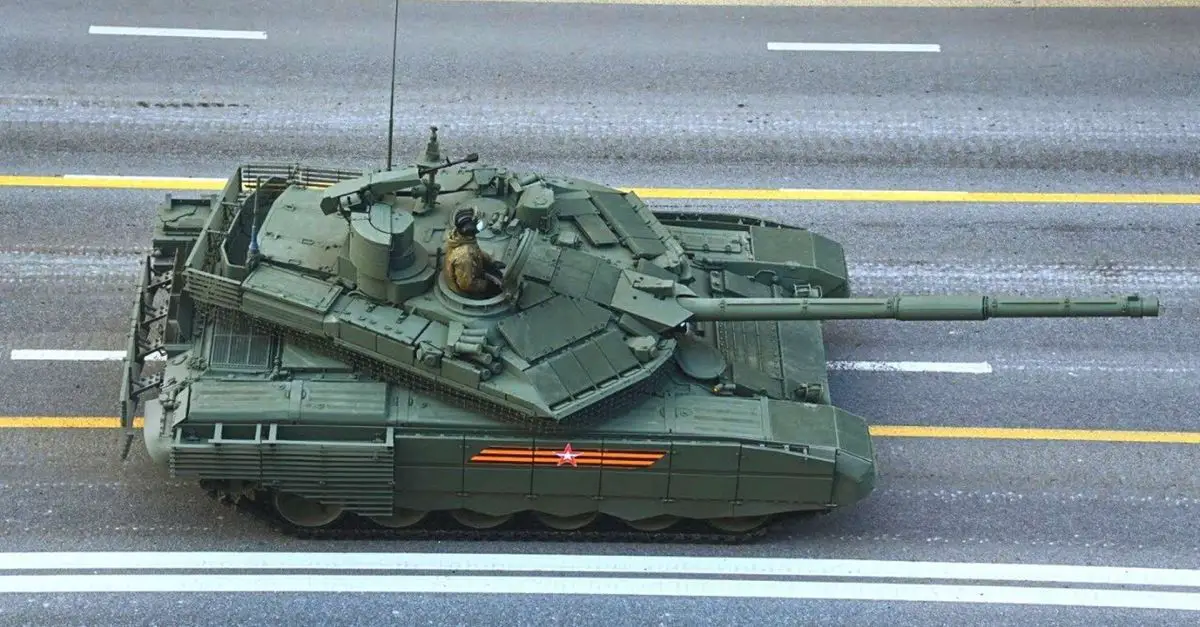
In addition to passive defense measures, the T-90M includes the Shtora-1 Electro-Optical Countermeasures System, a soft-kill APS that disrupts the guidance systems of incoming missiles. (Picture source: Russian social media)
The T-90M Proryv-3 tanks will be equipped with the T09-A6-1 Arena-M active protection kit, designed to improve the survivability of these tanks in combat. However, it is important to note that not all T-90M tanks have been equipped with this hard-kill active protection system (APS). While there have been reports and plans to equip some T-90M and T-80BVM tanks with the Arena-M system, the implementation has been inconsistent.
The primary reasons for this include the high cost and logistical challenges associated with producing and installing these systems, especially given the current economic constraints and sanctions affecting Russia. As a result, the Arena-M system, while installed on some tanks, has not been universally deployed across all T-90M units.
Uralvagonzavod, an entity within the Rostec State Corporation, is responsible for delivering these tanks as part of Russia's ongoing efforts to modernize its armored forces. The Arena-M system is compatible with various Russian-made tanks, including the T-72, T-80, and T-90. This hard-kill system is designed to intercept and neutralize incoming anti-tank guided missiles (ATGMs) and rocket-propelled grenades (RPGs).
This hard-kill APS operates using Doppler radar, providing 360-degree coverage to detect threats. Upon detection, the system launches explosive interceptors that detonate near the incoming projectile, neutralizing it before impact. The Arena-M system has a reaction time of approximately 0.07 seconds, offering a 270-degree arc of coverage focused on the frontal and lateral aspects, providing defense against various attack angles. Despite these capabilities, the limited deployment means that many T-90M tanks still rely primarily on their advanced armor and other defensive measures without the added protection of a fully integrated APS.
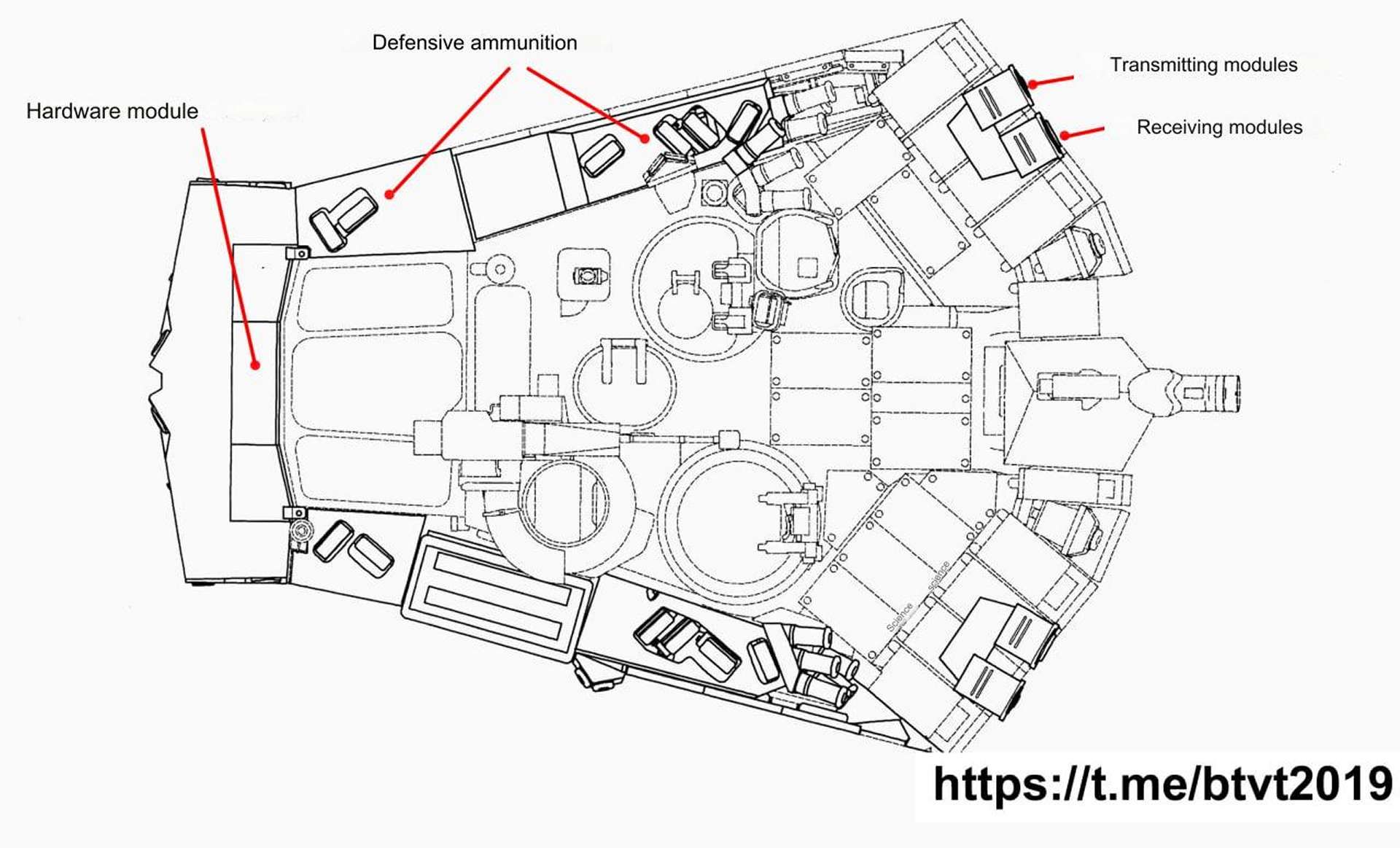
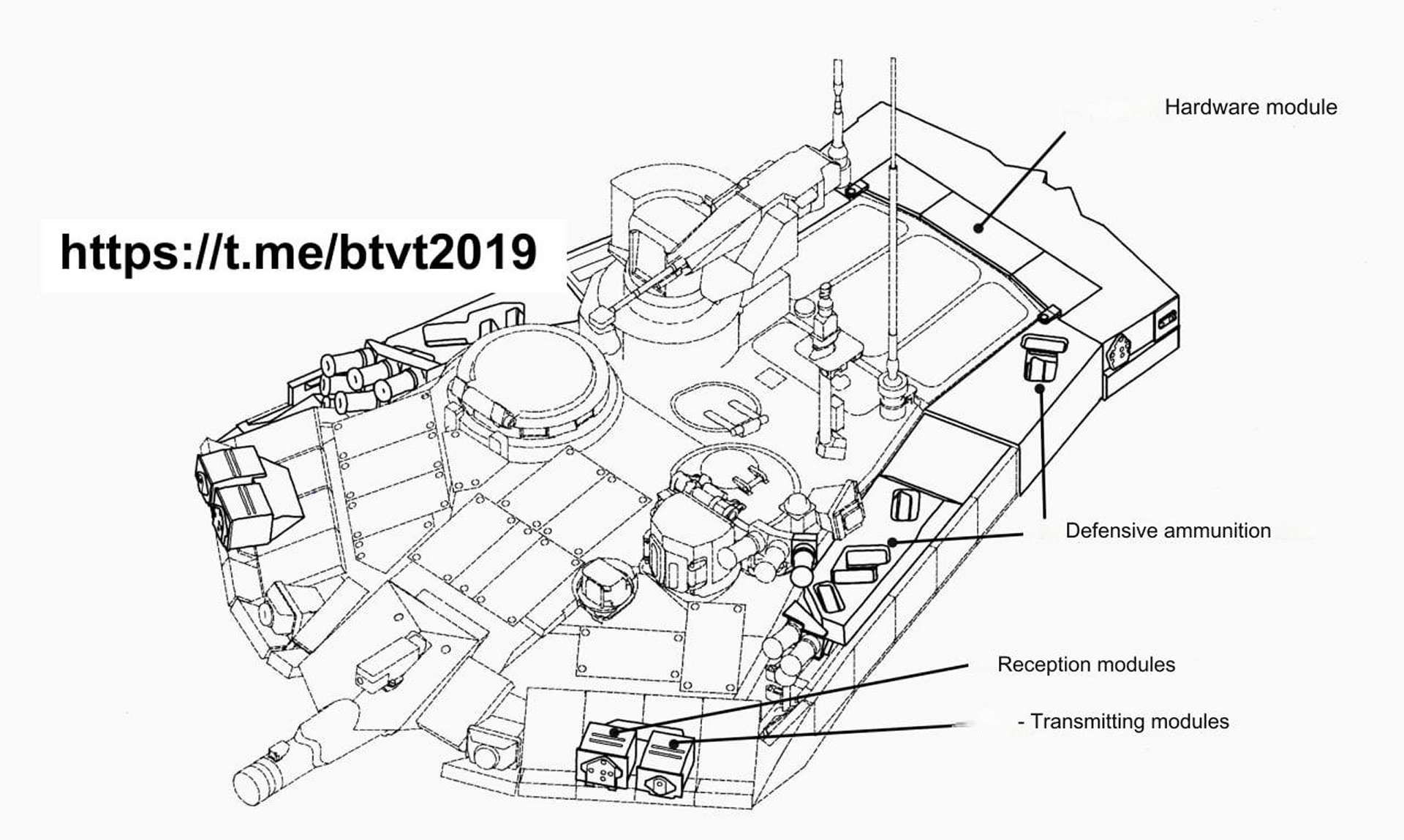
The Arena-M system has a reaction time of approximately 0.07 seconds, offering a 270-degree arc of coverage focused on the frontal and lateral aspects, providing defense against various attack angles. (Pictures source: Telegram/BTVT.info)
The Arena-M system is the latest development in a series of protective technologies that began in the late 1980s. Initially developed by the Design Bureau of Machine Building (KBM) in Kolomna, the original Arena system was designed to detect and destroy incoming threats automatically. The first version of this system was completed in the 1990s, with an export variant developed at the same time. The system has been continuously refined, with significant updates introduced in 2012, leading to the current Arena-M iteration.
In January 2017, Arena-M entered testing with an updated layout and enhanced capabilities. Recent inspections by Defense Minister Sergei Shoigu in February 2024 at the Scientific and Production Corporation KBM noted the system's progress. Shoigu highlighted the need to accelerate the project, reflecting the Ministry of Defense's intention to finalize and implement the system swiftly.
According to leaked files, the T-90M Proryv main battle tank is equipped with various protection systems designed to increase its survivability in different combat environments. The tank's primary defense mechanism is its advanced composite armor, a multilayered structure comprising high-hardness steel, composite materials, and ceramics. This armor is reported to provide protection equivalent to 950 mm Rolled Homogeneous Armor (RHA) against kinetic energy projectiles and up to 1350 mm RHA against shaped charges. Additionally, the T-90M is outfitted with modular armor panels that can be replaced or upgraded as needed, allowing for adjustments in the field to address evolving threats or to facilitate repairs.
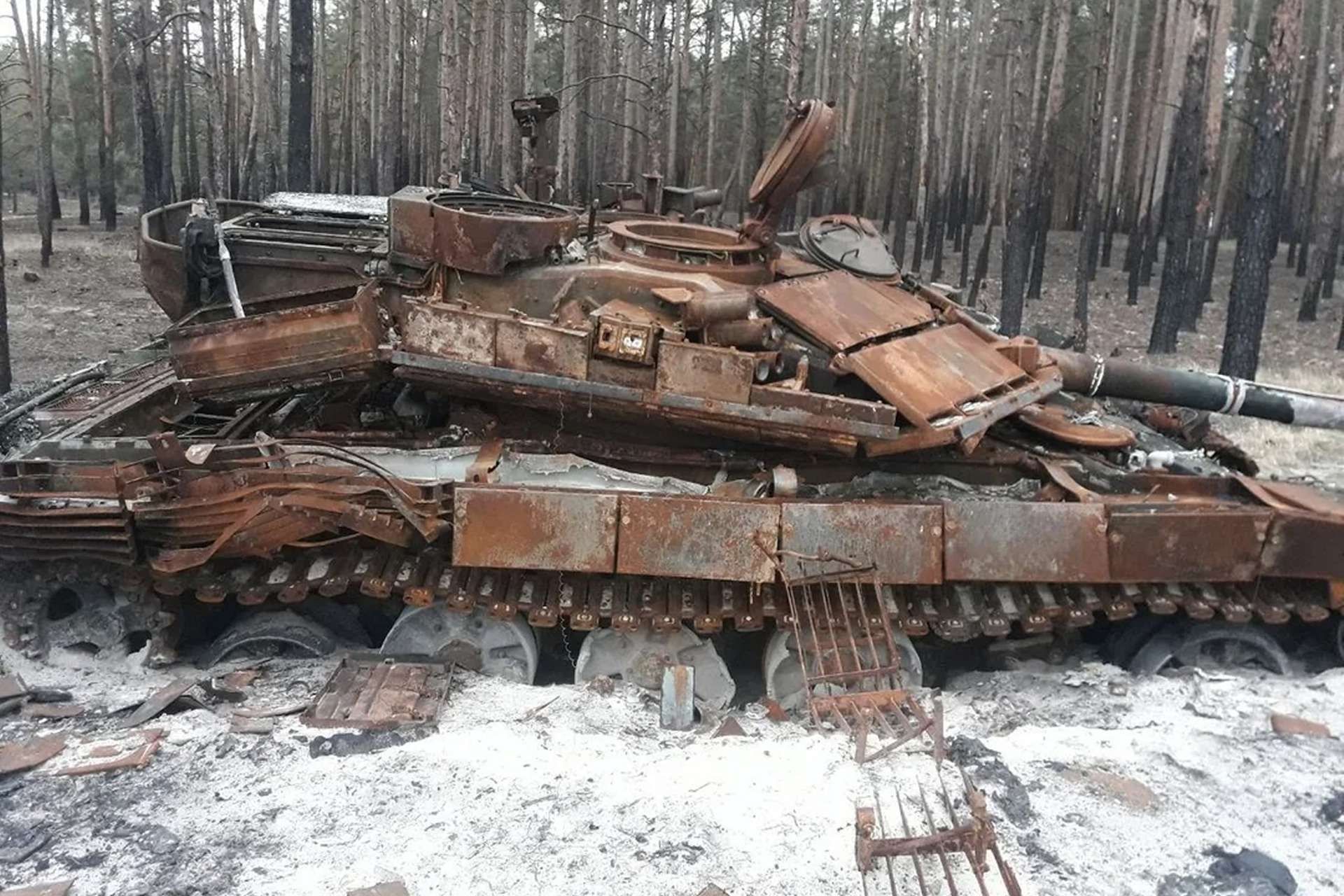
Russia has recently lost its 100th T-90M main battle tank in the ongoing conflict in Ukraine. Each T-90M tank is valued at approximately $4.5 million, meaning Russia has lost at least $450 million in Ukraine solely due to the loss of these specific tanks since the war began. (Picture source: Twitter/Naalsio)
The tank also incorporates the Relikt Explosive Reactive Armor (ERA), a dual-layered system intended to counter modern threats, including tandem warheads and advanced kinetic energy projectiles. The Relikt ERA is designed to reduce the penetration capabilities of such munitions and is deployed on the turret front, sides, and hull front, providing coverage against various forms of attack.
In addition to these passive defense measures, the T-90M includes the Shtora-1 Electro-Optical Countermeasures System, a soft-kill APS that disrupts the guidance systems of incoming missiles. This system consists of laser warning receivers, infrared jammers, and smoke grenade launchers, which work together to obscure the tank and interfere with the targeting of guided munitions. This system adds another layer of defense by reducing the likelihood of successful missile strikes.
The T-90M is also equipped with advanced fire suppression and Nuclear, Biological, and Chemical (NBC) protection systems. The 3ETs13-1 automatic fire suppression system is designed to detect and extinguish fires rapidly, protecting the crew and critical systems. Meanwhile, the NBC protection system ensures that the tank remains sealed against external contamination, maintaining a safe environment for the crew in the presence of hazardous materials.
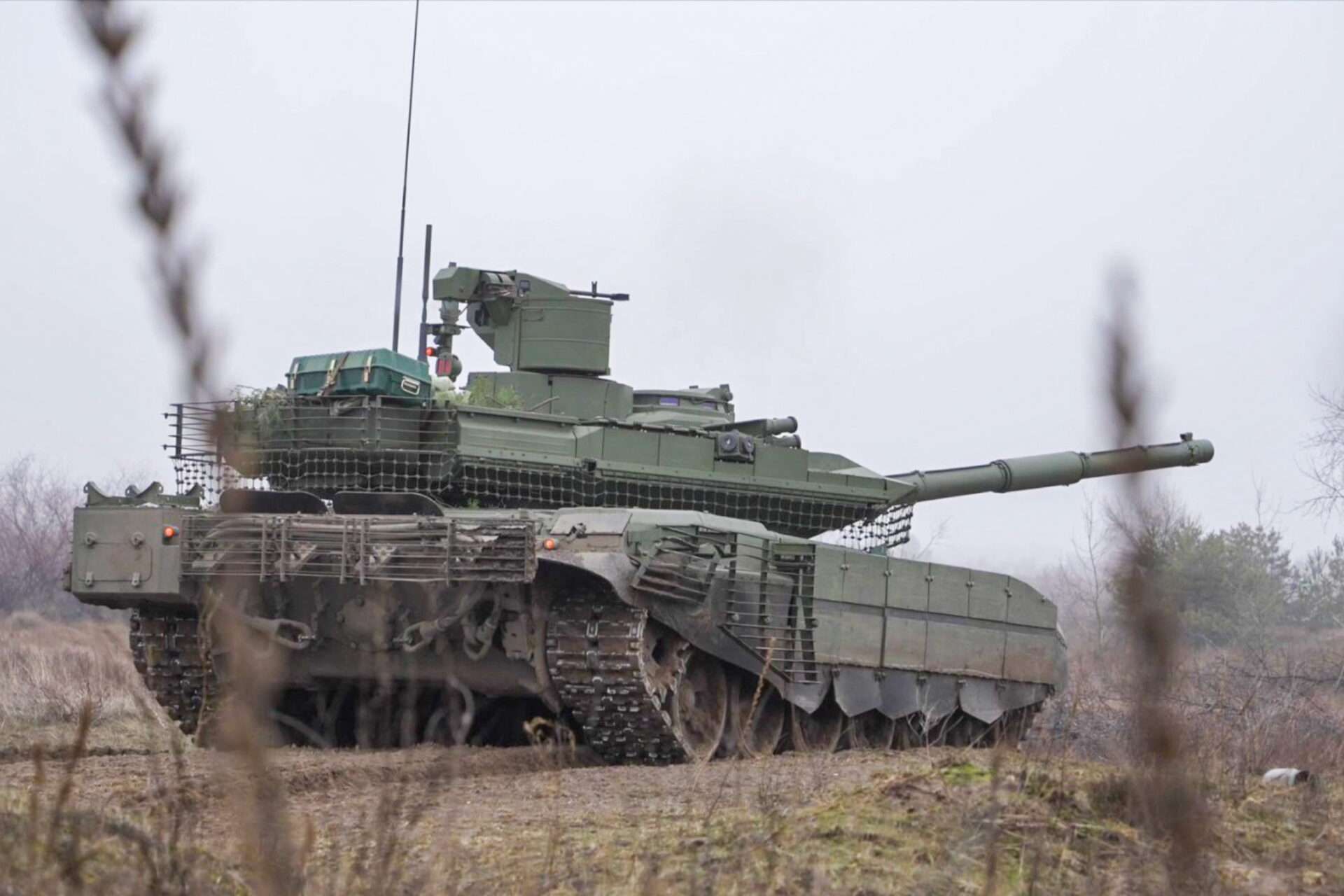
The tank's primary defense mechanism is its advanced composite armor, a multilayered structure comprising high-hardness steel, composite materials, and ceramics. This armor is reported to provide protection equivalent to 950 mm Rolled Homogeneous Armor (RHA) against kinetic energy projectiles and up to 1350 mm RHA against shaped charges. (Picture source: Russian social media)


























